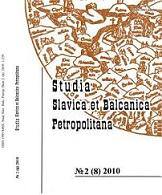Хорваты и горы: о характере хорватской идентичности в Аварском каганате
The Croats and mountains: on the character of the Croatian identity in the Avar qaganate
Author(s): Denis Eugenievich AlimovSubject(s): History
Published by: Издательство Исторического факультета СПбГУ
Keywords: the Dalmatian Croats; Alpine Croats; Carpathian Croats; Silesian Croats; Croatian identity; the Avar qaganate
Summary/Abstract: Though the «Avar» model of the Croats' ethnogenesis is rather popular in historiography, there is no consensus about the concrete character of this identity among the advocates of this theory. Against this background a further discussion of the question of the Croats's identity within the Avar qaganate may seem to have no prospects for lack of sources. However, it seems to us that opportunities for such a discussion are not completely exhausted. In this article we have focused on some features of geographical location of the Croatian groups in early medieval Europe, trying to find an acceptable explanation for them within the context of the sociopolitical history of the Avar qaganate. The examination of the geographical location of early medieval Croatian groups shows that all the important groups, i.e. the Dalmatian, Alpine, Carpathian and Silesian Croats, were located in areas adjusting mountain ranges. It should be also noted that all the areas, where the Croatian groups were mentioned in early medieval sources, were located outside the Carpathian Basin which was or could be controlled by the Avars. At the same time, it is necessary to admit that the spaces occupied by the Croats were not situated far from the Carpathian Basin, the Silesian Croats being located to northwest from it, the Carpathian Croats to northeast, the Alpine and Dalmatian Croats to southwest. In our opinion, the most acceptable explanation for this fact would be the assumption that the Croats lived originally in the territory of the Carpathian Basin, being closely connected with the Avars, but then had to leave it, taking cover from the Avars behind mountain ranges. As is known, in the history of the Avar qaganate there were migrations of groups opposed to the central authorities of the qaganate. Such migrations are known to be a rather characteristic feature of steppe empires. As is seen from the written evidence concerning the Rouran qaganate considered by many scholars to be a predecessor of that of the Avars, during the Tuoba Wei campaigns against the Rouran polity, the Rouran tried to take cover behind mountain ranges that seems to be absolutely natural because it was there that they could feel in relative safety. In our opinion such a location of the Croatian groups is a strong argument in favor of the opinion of those scholars who were prone to connect the initial phase of the Croats' «ethnogenesis» with the great internal crisis that took place in the Avar qaganate in 630s. As it was noted by Henrie Gregoire, and after him by Walter Pohl, Neven Budak and Lujo Margetić there exists a similarity between two accounts about the Croats' migration to Dalmatia from the 30th and 31st chapters of Constantine Porphyrogenitus' treatise «De administrando imperio» and the story of Kubrat's anti-Avar revolt from patriarch Nicephorus's «Breviarum», including the probable identity of the name of the legendary Croatian leader Hrovatos (and, hence, of the ethnic name of the Croats
Journal: Петербургские славянские и балканские исследования
- Issue Year: 2010
- Issue No: 2
- Page Range: 135-160
- Page Count: 26
- Language: Russian

